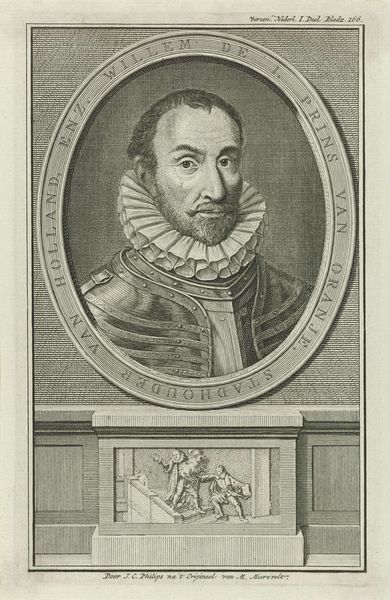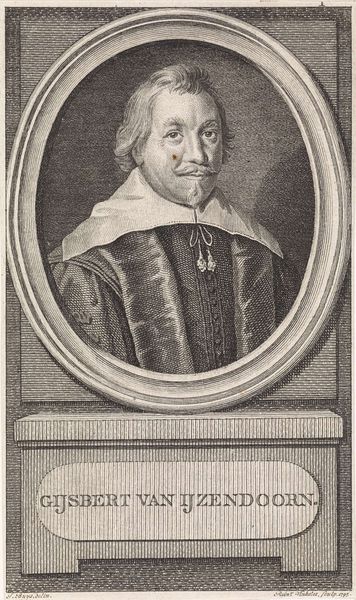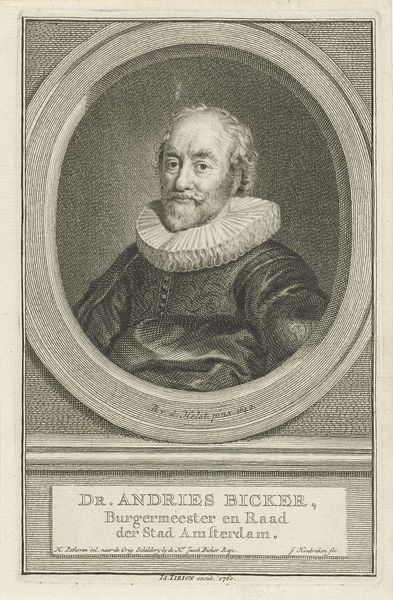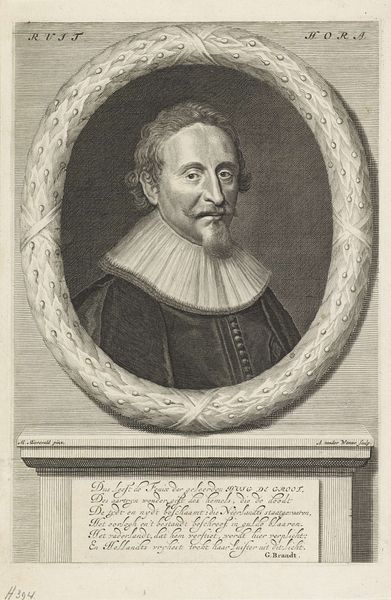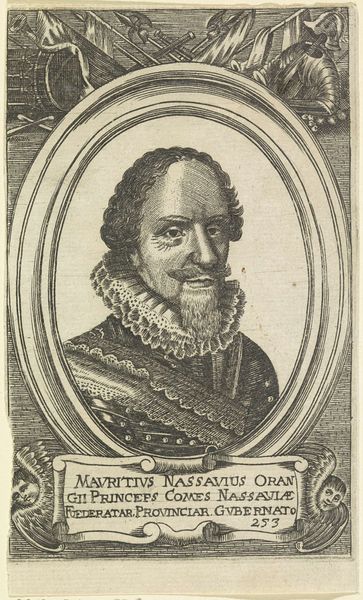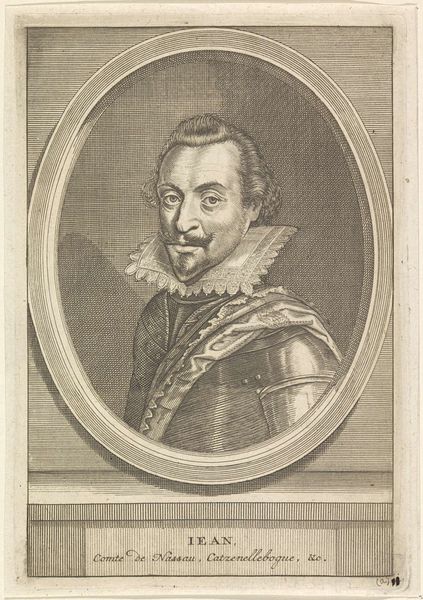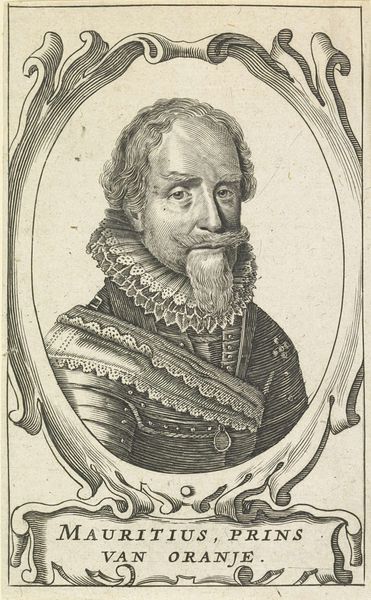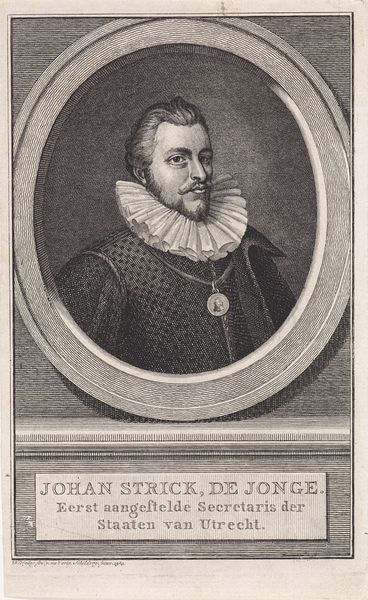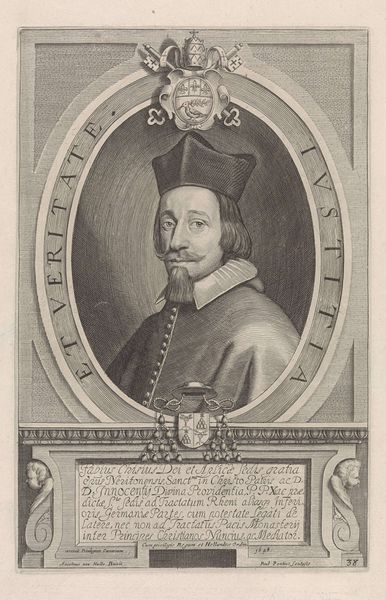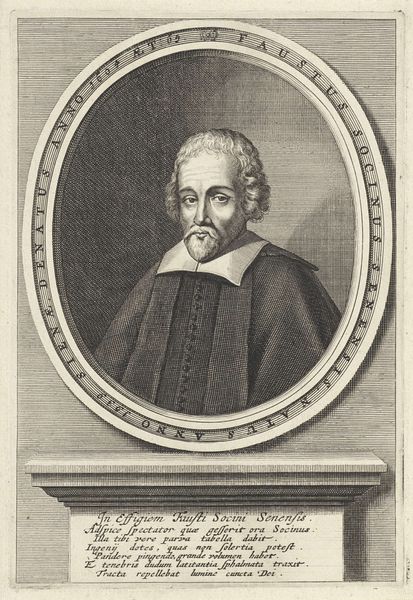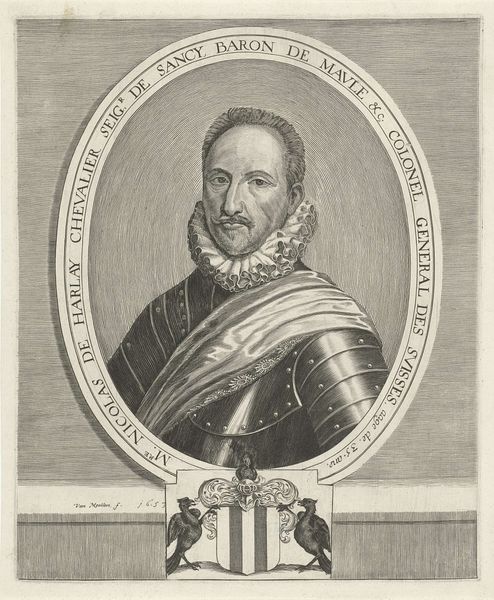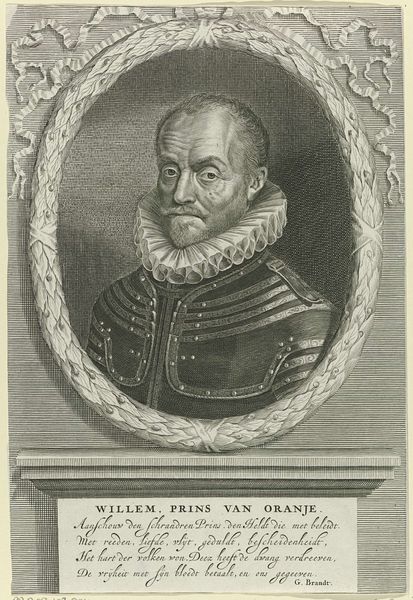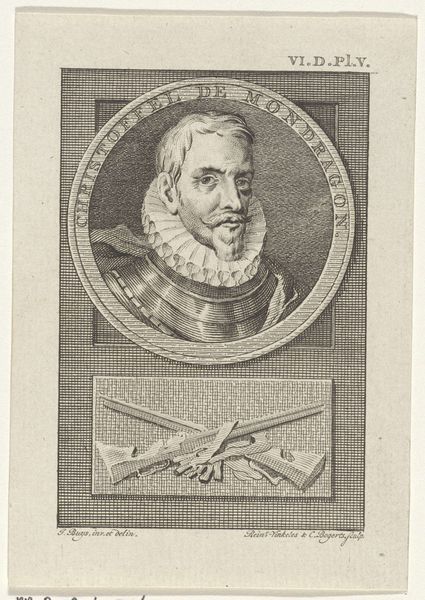
print, engraving
#
portrait
#
neoclacissism
# print
#
figuration
#
line
#
academic-art
#
engraving
#
realism
Dimensions: height 152 mm, width 90 mm
Copyright: Rijks Museum: Open Domain
Curator: Immediately, I notice the stark contrast. The figure emerges from the shadows, framed by a delicate oval. There's a strong sense of order in this composition. Editor: This print, "Portret van Gerard van Velzen," was created in 1793 by Reinier Vinkeles and is currently held in the Rijksmuseum collection. It depicts its subject, a man named Gerard van Velzen, using the engraving technique prevalent at the time. But more than just a picture, this print serves as a mirror to its social milieu. Van Velzen probably belonged to the emerging Dutch bourgeois class, an aspirational segment keen to imitate aristocracy, in dress and comportment, reflecting their claim on civic power. Curator: Note the rigid lines and carefully delineated details. The symmetry of the composition contributes to its stability, reinforcing ideas of civic and personal integrity that were considered so important in that Neoclassical era. I see semiotic clues everywhere. Editor: Indeed, and there's perhaps an echo here of similar tendencies across Europe where Enlightenment values started to take root. We must also acknowledge, however, that notions of liberty and equality during the Enlightenment period weren't universally applied, which should push us to investigate the hidden socio-economic strata defining 18th-century Dutch society. This image tells a tale, if only we commit to reading its fine lines. Curator: Even without historical knowledge, the artist's expertise is visible. There is tonal gradation created solely through precise and nuanced lines—a fascinating use of visual language in a way that both describes the physical presence and evokes his status and character. The eyes have an especially vivid, albeit inscrutable expression, even today. Editor: Looking at the attire, note the subtle signals denoting privilege. Fine fabric, delicate lace… objects can hold so much political agency. Curator: Precisely. And thinking about that kind of close looking… It leads us back to examining not just what is represented, but HOW. Editor: I completely concur. It’s through this combined critical analysis – from the micro to the macro, the line to its context – that the image opens to the curious eye.
Comments
No comments
Be the first to comment and join the conversation on the ultimate creative platform.
